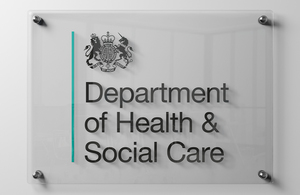Antimicrobial resistance poses ‘catastrophic threat’, says Chief Medical Officer
The Chief Medical Officer's annual report provides a comprehensive overview of the threat of antimicrobial resistance and infectious diseases.

Global action is needed to tackle the catastrophic threat of antimicrobial resistance, which in 20 years could see any one of us dying following minor surgery, England’s Chief Medical Officer Professor Dame Sally Davies said today.
The stark warning comes as the second volume of the Chief Medical Officer’s annual report is published, providing a comprehensive overview of the threat of antimicrobial resistance and infectious diseases.
Calling for politicians to treat the threat as seriously as MRSA, the report highlights a “discovery void” with few new antibiotics developed in the past two decades. It highlights that, while a new infectious disease has been discovered nearly every year over the past 30 years, there have been very few new antibiotics developed leaving our armoury nearly empty as diseases evolve and become resistant to existing drugs.
In addition to encouraging development of new drugs, the report highlights that looking after the current arsenal of antibiotics is equally important. This means using better hygiene measures to prevent infections, prescribing fewer antibiotics and making sure they are only prescribed when needed.
The Chief Medical Officer also states that more action is needed to tackle the next generation of healthcare associated infections, including new strains of pneumonia-causing klebsiella, that will be harder to treat.
Some 17 recommendations are made as part of the report, including:
-
a call for antimicrobial resistance to be put on the national risk register and taken seriously by politicians at an international level, including the G8 and World Health Organization;
-
better surveillance data across the NHS and world wide to monitor the developing situation;
-
more work carried out between the healthcare and pharmaceutical industries to preserve existing drugs and encourage the development of new antibiotics to fill the “discovery void” of the last 20 years; and
-
building on the success of the NHS in cutting MRSA rates, which have fallen by 80 per cent since a peak in cases in 2003 through better hygiene measures, which should be used when treating the next generation of healthcare associated infections such as new strains of harder-to-treat klebsiella.
Professor Dame Sally Davies said:
Antimicrobial resistance poses a catastrophic threat. If we don’t act now, any one of us could go into hospital in 20 years for minor surgery and die because of an ordinary infection that can’t be treated by antibiotics. And routine operations like hip replacements or organ transplants could be deadly because of the risk of infection.
That’s why governments and organisations across the world, including the World Health Organization and G8, need to take this seriously.
This is not just about government action. We need to encourage more innovation in the development of antibiotics – over the past two decades there has been a discovery void around antibiotics, meaning diseases have evolved faster than the drugs to treat them.
In some areas, like cutting rates of drug resistant MRSA, the NHS is already making good progress so it’s important that we use that knowledge across the system and I hope my recommendations will prompt people to do that.
The Department of Health will soon publish the UK Antimicrobial Resistance Strategy setting out how it will meet the challenge that the Chief Medical Officer has outlined.
The five-year UK Antimicrobial Resistance Strategy and Action Plan will:
• champion the responsible use of antibiotics – by ensuring NHS staff have the skills, knowledge and training to prescribe and administer antibiotics appropriately. Part of this will include reviewing and updating the curricula for medical undergraduates;
• strengthen surveillance – by improving the recording of data on the numbers of antibiotics prescribed and trends in antibiotic resistance, this information can used by clinicians to change patterns of prescribing. This will help reduce the level of resistance and help ensure patients respond to treatments; and
• encourage the development of new diagnostics, therapeutics and antibiotics, for example by continuing to support the Innovative Medicines Initiative (IMI) and other initiatives that encourage scientific research.
The Chief Medical Officer’s wide-ranging report makes several further recommendations on tackling antimicrobial resistance, including:
• new infection control measures should go beyond hospitals and be applied to home and community care settings;
• The national approach to tackling antimicrobial resistance should not just focus on humans and the risk of antimicrobial resistance in animals should be managed closely by the Department for Food, Environment and Rural Affairs;
• Public Health England should work closely with the NHS Commissioning Board to make sure that advanced testing facilities are available to treat infections brought into the country from abroad;
• further promotion of the benefits of vaccination and encouragement of vaccine uptake during pregnancy to prevent diseases such as flu and whooping cough should be undertaken;
•Directors of Public Health should work with schools to ensure the school nursing system is well-placed to deliver new immunisation programmes
Background information:
-
For more information contact the Department of Health press office on 020 7210 5239.
-
The report can be viewed on the website.